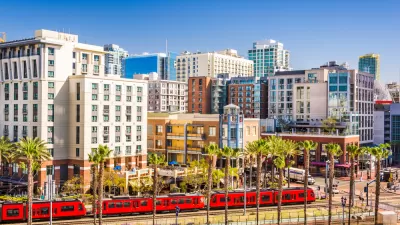With coordinated effort at the local, state, and federal levels, the United States could meet its goal of cutting greenhouse gas emissions in half by 2030.

A news release by Aliyah Kovner touts the results of a new study from Lawrence Berkeley National Laboratory that found that the United States can achieve its goal of reducing greenhouse gas emissions by 50 percent by 2030, “but big commitments will need to be made, immediately.”
Nikit Abhyankar, one of the study’s authors and a scientist in the Electricity Markets & Policy Department at Berkeley Lab, “notes that the most urgent actions will be to double the amount of renewable capacity built each year and transition predominately to electric vehicles within the next decade or so.” Kovner notes that “Reducing GHG emissions by 50% by 2030 would put the United States on a path to limit global warming to 1.5 degrees Celsius, the target scientists say is required to avoid the worst consequences of the climate crisis.”
According to the six techno-economic models analyzed in the study, “The majority of the country’s greenhouse gas emissions come from power generation and transportation, so to reduce overall emissions by 50%, the electricity grid needs to run on 80% clean energy (up from today’s 40%), and the majority of vehicles sold by 2030 need to be electric.”
The study also calls for a “coordinated policy response between states and the federal government.” The authors point out that “Thanks to advances in wind, solar, and energy storage technologies, powering the electric grid with renewables will not be more expensive; and electric vehicles could save every household up to $1,000 per year in net benefits.”
FULL STORY: A 50% Reduction in Emissions by 2030 Can be Achieved. Here’s How

Alabama: Trump Terminates Settlements for Black Communities Harmed By Raw Sewage
Trump deemed the landmark civil rights agreement “illegal DEI and environmental justice policy.”

Study: Maui’s Plan to Convert Vacation Rentals to Long-Term Housing Could Cause Nearly $1 Billion Economic Loss
The plan would reduce visitor accommodation by 25% resulting in 1,900 jobs lost.

Planetizen Federal Action Tracker
A weekly monitor of how Trump’s orders and actions are impacting planners and planning in America.

Waymo Gets Permission to Map SF’s Market Street
If allowed to operate on the traffic-restricted street, Waymo’s autonomous taxis would have a leg up over ride-hailing competitors — and counter the city’s efforts to grow bike and pedestrian on the thoroughfare.

Parklet Symposium Highlights the Success of Shared Spaces
Parklets got a boost during the Covid-19 pandemic, when the concept was translated to outdoor dining programs that offered restaurants a lifeline during the shutdown.

Federal Homelessness Agency Places Entire Staff on Leave
The U.S. Interagency Council on Homelessness is the only federal agency dedicated to preventing and ending homelessness.
Urban Design for Planners 1: Software Tools
This six-course series explores essential urban design concepts using open source software and equips planners with the tools they need to participate fully in the urban design process.
Planning for Universal Design
Learn the tools for implementing Universal Design in planning regulations.
Caltrans
Smith Gee Studio
Institute for Housing and Urban Development Studies (IHS)
City of Grandview
Harvard GSD Executive Education
Toledo-Lucas County Plan Commissions
Salt Lake City
NYU Wagner Graduate School of Public Service





























